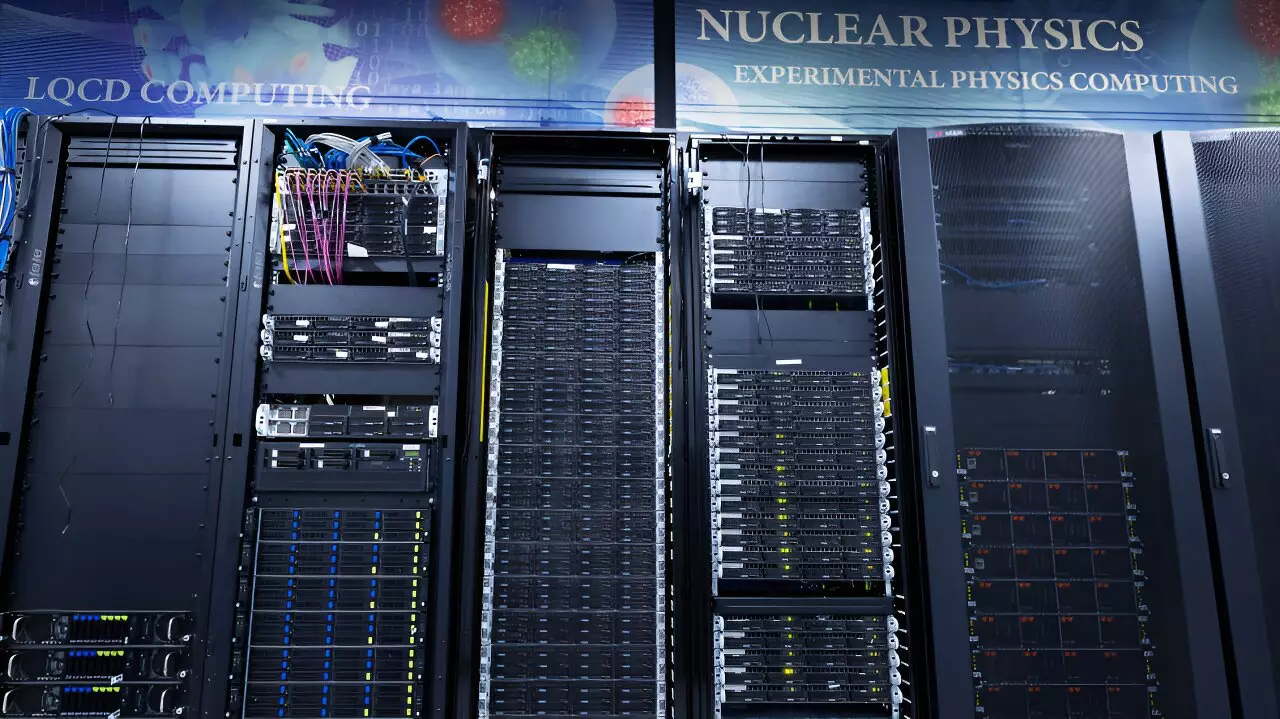At the heart of atomic structure lies the nucleus, a bustling environment that defies the otherwise solid appearance of matter. Within it reside particles called hadrons—most commonly protons and neutrons—which serve as the foundation of everything we know. Yet, beneath this apparent solidity is a dynamic interplay of subatomic components—quarks and gluons, collectively referred to as partons. Understanding these partons and their interactions is vital for unraveling the fundamental nature of matter. The HadStruc Collaboration, hosted by the U.S. Department of Energy’s Thomas Jefferson National Accelerator Facility, has taken on this intricate task. Their recent research endeavors have yielded significant theoretical advances in our comprehension of hadron structure and dynamics.
The HadStruc Collaboration brings together a diverse lineup of physicists from institutions including Jefferson Lab, William & Mary, and Old Dominion University. Their mission revolves around formulating a mathematical framework to describe how partons work together to form hadrons. Joseph Karpie, a postdoctoral researcher and member of HadStruc, elaborates that this group employs a specialized approach known as lattice quantum chromodynamics (QCD) to decode the internal structure of the proton. The collaboration aims to go beyond traditional models by providing a three-dimensional perspective on the spatial distribution and interaction dynamics of partons.
Recent explorations have introduced generalized parton distributions (GPDs), a more nuanced framework than the conventional one-dimensional parton distribution functions (PDFs). This shift is not just a minor enhancement; it allows physicists to address deeper questions related to the proton’s spin, challenging long-held assumptions about how this fundamental property arises.
The question of proton spin dates back several decades and remains one of the more confounding enigmas in nuclear physics. Early experiments in the late 1980s revealed a surprising result: the intrinsic spin of quarks contributes less than half of the proton’s overall spin. This surprising finding opened avenues for further inquiry into the roles that gluons and orbital angular momentum play in contributing to proton spin. Dutrieux, another key member of the HadStruc Collaboration, emphasizes the importance of GPDs in uncovering how spin is distributed among quarks and gluons, thereby offering a glimpse into the intricate workings of the proton’s composition.
The GPD framework also facilitates an exploration of the energy-momentum tensor, a crucial concept indicating how energy and momentum are distributed within the proton. This understanding is vital not only from a theoretical standpoint but also for its implications in understanding how protons interact with gravitational forces.
The level of complexity in studying the intricate web of interactions among partons necessitates advanced computational resources. The HadStruc researchers conducted an impressive array of simulations, totaling 65,000, utilizing supercomputers like Frontera at the Texas Advanced Computer Center and the Frontier supercomputer at Oak Ridge National Laboratory. This computational heavy lifting comprised 186 diverse simulations of protons in varying momentum conditions, amid 350 different gluon configurations. The amount of processing power required for such simulations reflects both the complexity of the research and the ambition driving the project.
The results obtained from these extensive simulations have validated the proposed 3D approach to hadron structure. Karpie notes that this milestone is essential for further investigations into QCD and paves the way for subsequent computational refinements to enhance the accuracy of their predictions.
As the HadStruc Collaboration prepares for future experimental validations, they are already engaged in various high-energy physics initiatives. Experiments centered on deeply virtual Compton scattering (DVCS) and deeply virtual meson production (DVMP) are underway both at Jefferson Lab and other facilities around the globe. Karpie mentions the anticipation of substantial advancements expected from the Electron-Ion Collider (EIC), presently in development at Brookhaven National Laboratory. The EIC holds the promise to delve deeper into hadron structures than existing technologies allow.
The trajectory of the HadStruc Collaboration is aimed at preempting experimental efforts, striving to make predictions that align seamlessly with future experimental data. The potential for enhancing our understanding of quantum chromodynamics (QCD)—a cornerstone of particle physics—is titanic, as the collaboration’s innovative approaches could catalyze a new era in hadronic physics.
In essence, the HadStruc Collaboration is not merely engaged in theoretical exploration but is at the forefront of reshaping our understanding of the building blocks of matter. By decoding the interactions of partons within hadrons, they are charting a path toward a more coherent understanding of the universe at its most fundamental level. As experiments across the globe collect data, the findings will surely contribute to a richer, more material understanding of the forces that bind the fabric of our reality.


Leave a Reply